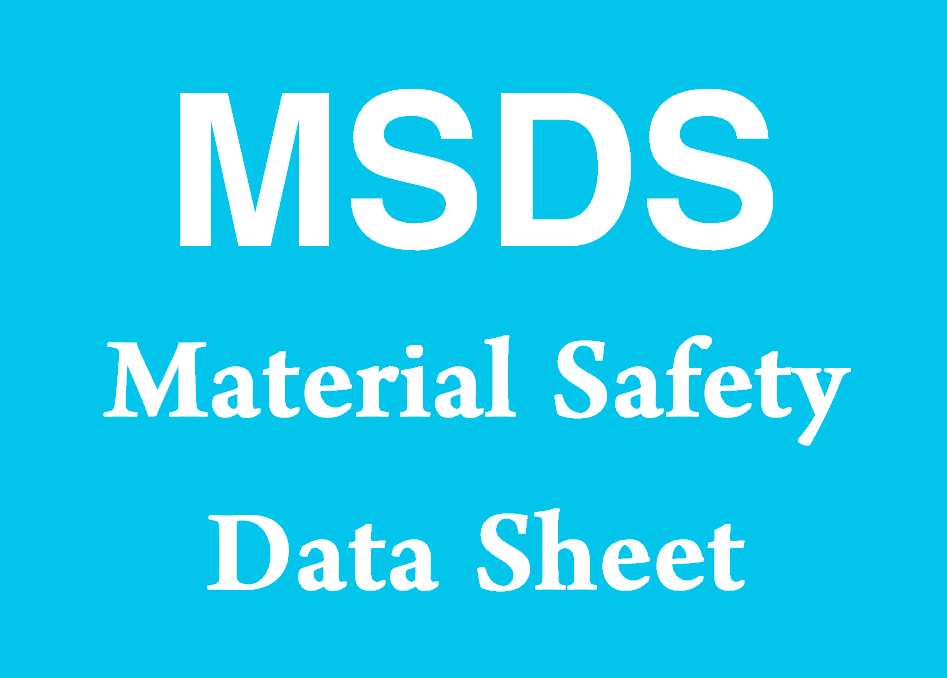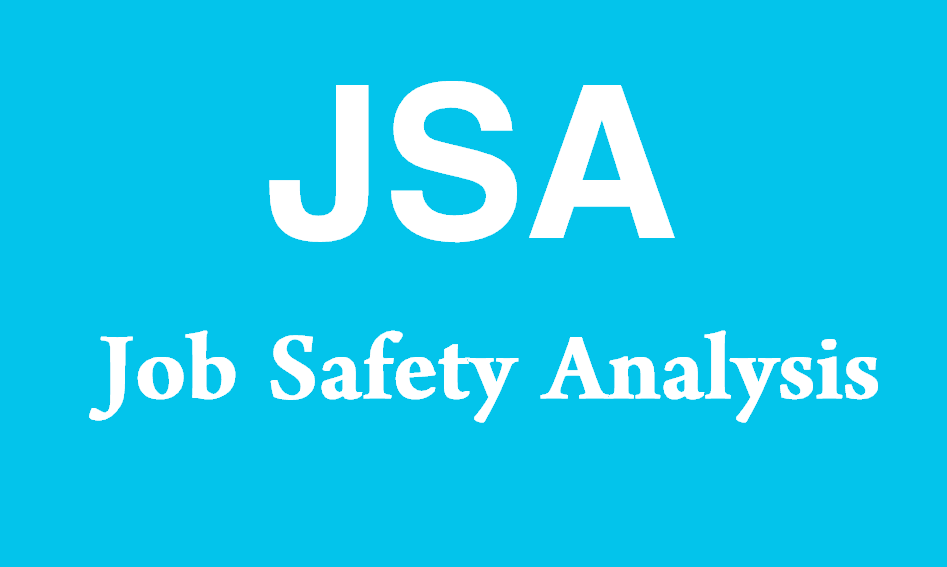What Does MSDS Stand For?
MSDS stands for “Material Safety Data Sheet.” A Material Safety Data Sheet is a document that provides detailed information about the properties, handling, storage, and emergency procedures related to hazardous chemicals. MSDSs are essential for ensuring workplace safety and compliance with regulatory requirements by informing employees, employers, and emergency responders about the potential hazards and safe handling practices of chemical substances.

Comprehensive Explanation of Material Safety Data Sheet (MSDS)
Introduction to Material Safety Data Sheets
Material Safety Data Sheets (MSDS) are critical documents in occupational health and safety. They are designed to provide workers, emergency responders, and consumers with vital information about the safe use, handling, and disposal of hazardous chemicals. MSDSs are required by regulatory agencies such as the Occupational Safety and Health Administration (OSHA) in the United States and are part of the Globally Harmonized System of Classification and Labelling of Chemicals (GHS).
Purpose and Importance of MSDS
Ensuring Safety
The primary purpose of an MSDS is to ensure the safety of individuals who handle or are exposed to hazardous chemicals. It provides comprehensive information on the chemical’s properties, health hazards, safe handling practices, and emergency measures.
Regulatory Compliance
MSDSs are essential for compliance with workplace safety regulations. Regulatory bodies mandate that manufacturers, distributors, and employers maintain and provide access to MSDSs to ensure that hazardous chemicals are managed safely.
Emergency Response
In the event of a chemical spill, fire, or exposure, MSDSs provide emergency responders with crucial information on how to deal with the incident safely and effectively. This includes first aid measures, firefighting procedures, and spill cleanup guidelines.
Structure and Content of MSDS
An MSDS typically contains the following sections:
1. Identification
This section includes the product name, manufacturer or distributor details, recommended uses, and emergency contact information. It helps users identify the chemical and obtain additional information if needed.
2. Hazard Identification
This section provides an overview of the chemical’s hazards, including its classification according to regulatory standards. It includes signal words, hazard statements, and precautionary statements to inform users of the risks.
3. Composition/Information on Ingredients
This section lists the chemical ingredients, their concentrations, and CAS numbers (Chemical Abstracts Service). It provides information on the substances that contribute to the hazards.
4. First Aid Measures
This section outlines the necessary first aid measures for different types of exposure, such as inhalation, skin contact, eye contact, and ingestion. It includes instructions on what to do immediately after exposure to minimize harm.
5. Firefighting Measures
This section provides information on suitable extinguishing media, specific hazards arising from the chemical during a fire, and special protective equipment for firefighters. It helps responders manage chemical fires safely.
6. Accidental Release Measures
This section includes procedures for responding to spills or leaks, including personal precautions, protective equipment, and emergency procedures. It also covers methods for containment and cleanup to prevent environmental contamination.
7. Handling and Storage
This section provides guidelines on the safe handling and storage of the chemical. It includes recommendations on personal protective equipment (PPE), safe storage conditions, and incompatible materials.
8. Exposure Controls/Personal Protection
This section lists exposure limits, engineering controls, and personal protective measures. It helps users understand how to protect themselves from exposure through the use of ventilation, PPE, and other controls.
9. Physical and Chemical Properties
This section provides detailed information on the chemical’s physical and chemical properties, such as appearance, odor, pH, melting point, boiling point, flash point, and solubility. It helps users understand the chemical’s behavior under different conditions.
10. Stability and Reactivity
This section includes information on the chemical’s stability and potential reactions. It covers conditions to avoid, incompatible materials, and hazardous decomposition products.
11. Toxicological Information
This section provides information on the chemical’s toxicological properties, including acute and chronic effects, routes of exposure, and symptoms of exposure. It helps users understand the health risks associated with the chemical.
12. Ecological Information
This section provides information on the chemical’s environmental impact, including its effects on aquatic and terrestrial ecosystems, bioaccumulation potential, and biodegradability.
13. Disposal Considerations
This section provides guidelines on the safe disposal of the chemical and its container. It includes information on waste treatment methods and regulatory requirements for disposal.
14. Transport Information
This section includes information on the safe transport of the chemical, including UN numbers, proper shipping names, transport hazard classes, packing groups, and special precautions for transport.
15. Regulatory Information
This section provides information on the regulatory status of the chemical, including any specific regulations or standards that apply. It helps users understand the legal requirements for handling and using the chemical.
16. Other Information
This section includes any additional information that may be relevant, such as the date of preparation or last revision of the MSDS and any changes made to the document.
Benefits of Using MSDS
Enhancing Workplace Safety
MSDSs are fundamental tools for promoting workplace safety. They provide essential information that helps employees understand the hazards associated with chemicals and the precautions they need to take to protect themselves.
Supporting Risk Management
MSDSs support risk management by providing detailed information on how to handle, store, and dispose of hazardous chemicals safely. This helps organizations prevent accidents and minimize the risks associated with chemical use.
Facilitating Compliance
By maintaining and providing access to MSDSs, organizations can comply with regulatory requirements and avoid penalties. MSDSs ensure that chemical hazards are communicated effectively to all relevant stakeholders.
Assisting in Emergency Preparedness
MSDSs play a crucial role in emergency preparedness by providing information on how to respond to chemical spills, fires, and exposures. This helps organizations develop effective emergency response plans and procedures.
Challenges and Limitations
Keeping Information Up-to-Date
One of the challenges associated with MSDSs is ensuring that the information is kept up-to-date. Manufacturers and distributors must regularly review and update MSDSs to reflect any changes in chemical properties, regulatory requirements, or safety guidelines.
Variability in Quality and Format
The quality and format of MSDSs can vary significantly between manufacturers and countries. This variability can make it challenging for users to find and interpret the information they need.
Accessibility
Ensuring that MSDSs are readily accessible to all employees who need them can be a challenge. Organizations must implement systems and procedures to ensure that MSDSs are available in the workplace and that employees know how to access them.
Future Directions
Digitalization of MSDS
The digitalization of MSDSs is a growing trend that offers several benefits, including easier access, better searchability, and the ability to integrate MSDS information with other safety management systems. Digital platforms can also facilitate the automatic updating of MSDSs.
Enhanced Standardization
Efforts to enhance the standardization of MSDSs are ongoing. Improved standardization can help ensure that MSDSs are consistent, comprehensive, and easy to understand, regardless of the manufacturer or country of origin.
Integration with GHS
The integration of MSDSs with the Globally Harmonized System of Classification and Labelling of Chemicals (GHS) is an important development. GHS provides a standardized approach to classifying and labeling chemicals, which can improve the consistency and quality of MSDSs.
Notes to Importers
Importance of MSDS for Importers
For importers, MSDSs are crucial for ensuring the safe handling, storage, and transport of chemicals. Importers must ensure that they obtain and review MSDSs for all chemicals they import and that they comply with all relevant safety and regulatory requirements.
Key Considerations for Importers
Regulatory Compliance
Importers must ensure that the MSDSs for the chemicals they import comply with the regulatory requirements of the destination country. This includes ensuring that the MSDSs are up-to-date and that they provide all the necessary information.
Safe Handling and Storage
Importers should use the information in the MSDSs to develop safe handling and storage procedures for the chemicals they import. This includes providing appropriate training and personal protective equipment (PPE) for employees.
Emergency Preparedness
Importers should develop and implement emergency response plans based on the information in the MSDSs. This includes preparing for potential chemical spills, fires, and exposures.
Practical Tips for Importers
Verify MSDS Accuracy
Before importing chemicals, importers should verify the accuracy and completeness of the MSDSs. This includes checking that the MSDSs are up-to-date and that they provide all the necessary information.
Provide Training
Importers should provide training for employees on how to read and use MSDSs. This includes training on the safe handling, storage, and disposal of chemicals, as well as emergency response procedures.
Maintain Accessibility
Importers should ensure that MSDSs are readily accessible to all employees who need them. This includes maintaining a central repository of MSDSs and providing electronic access where possible.
Sample Sentences and Their Meanings
- “The MSDS for the chemical provides detailed information on safe handling practices and emergency procedures.”
- This sentence highlights that the MSDS contains essential safety and emergency information for handling the chemical.
- “Employees must review the MSDS before using any hazardous chemicals to ensure they understand the risks and precautions.”
- This sentence emphasizes the importance of employees reviewing the MSDS to understand the hazards and necessary safety measures.
- “The MSDS includes first aid measures for different types of exposure, such as inhalation and skin contact.”
- This sentence indicates that the MSDS provides specific first aid instructions for various exposure scenarios.
- “Importers should verify that the MSDSs for imported chemicals comply with local regulatory requirements.”
- This sentence advises importers to ensure that the MSDSs meet the regulatory standards of the destination country.
- “Access to the MSDS is essential for emergency responders to manage chemical spills and exposures effectively.”
- This sentence highlights the importance of making MSDSs accessible to emergency responders for effective incident management.
Other Meanings of MSDS
| Acronym | Full Form | Description |
|---|---|---|
| MSDS | Material Safety Data Sheet | A document providing information on the safe use, handling, and disposal of hazardous chemicals. |
| MSDS | Marine Safety Data Sheet | A document providing safety information for marine chemicals and materials. |
| MSDS | Mobile Subscriber Data System | A system used by mobile network operators to manage subscriber data. |
| MSDS | Medical Services Data Set | A collection of data related to medical services provided to patients. |
| MSDS | Military Service Data System | A system used to manage data related to military personnel and their service records. |
| MSDS | Mission Support Data System | A system used to provide data support for mission-critical operations. |
| MSDS | Management Systems Data Sheet | A document providing information on the management systems used within an organization. |
| MSDS | Modular Storage Device System | A system for modular storage and management of digital data. |
| MSDS | Microbial Strain Data Sheet | A document providing information on microbial strains used in research and industry. |
| MSDS | Multi-Spectral Data System | A system used for capturing and analyzing multi-spectral data. |
| MSDS | Master Safety Data System | A centralized system for managing safety data across an organization. |
| MSDS | Marketing Services Data Sheet | A document providing information on marketing services and strategies. |
| MSDS | Manufacturing Safety Data Sheet | A document providing safety information for manufacturing processes and materials. |
| MSDS | Medical Supply Data Sheet | A document providing information on medical supplies and equipment. |
| MSDS | Management Science Data System | A system used for managing data related to management science research. |
| MSDS | Mission-Specific Data Sheet | A document providing information specific to a particular mission or project. |
| MSDS | Multi-Source Data System | A system for integrating and managing data from multiple sources. |
| MSDS | Material Supply Data System | A system used for managing data related to material supply and logistics. |
| MSDS | Modular Software Development System | A system for developing software using modular components. |
| MSDS | Measurement Systems Data Sheet | A document providing information on measurement systems and equipment. |


